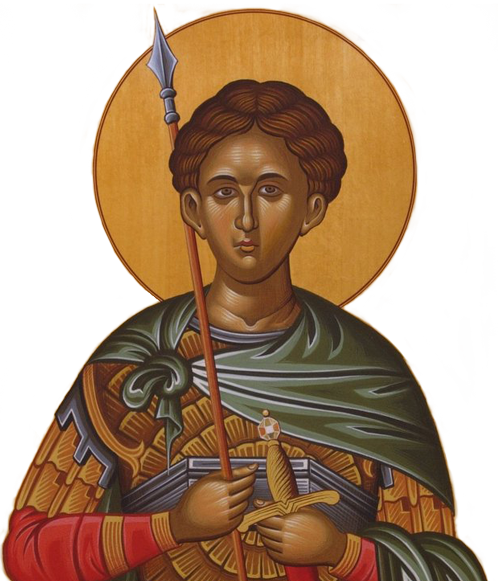We celebrate the birth of the Virgin Mary on September 8 as the first big festival of the Byzantine liturgical year, which began on September 1. All icons of this feast show the elderly but happy parents, SS. Joachim and Anne, and the birth is usually presented in a cozy family setting of women attendants bustling around Saint Anne. Saint Joachim is either peeking into the women’s quarter, or next to his wife. The infant Virgin was born in a normal manner, as is shown by St Anne reclining on the birthing-bed, and the baby being washed by the midwife in the lower front of the icon. Bright colors are used because of the joy that all Creation feels in its coming deliverance from Christ Who will find life in her.

Icons of this feast show the elderly but happy parents, SS. Joachim and Anne, and the birth is usually presented in a cozy family setting of women attendants bustling around Saint Anne.
In the legends about this event, the parents are presented as elderly and childless, and an angel tells them separately that they will finally have a child, a girl who will be the mother of the Messiah. This follows along with other biblical stories about conceptions of children after long years of prayer, including Isaac, Samuel, and St John the Baptist. Saint Anne, however, is different from the other mothers, because her child will become the virginal dwelling place of God Incarnate!

St Joachim and St Anne give thanks for their newly born daughter, Our Blessed Lady.
The child is given the name Mary, or Miriam, which is translated as hope. Indeed, she is the hope of all the nations of the world who labored under the power of sin and its darkness. In Exodus, Miriam saved the life of her baby brother, Moses, who would lead his people out of Egypt and darkness and into the Promised Land of milk and honey. This Miriam will do far more – her Son will lead all people out of their spiritual darkness and into the true light.
The child Mary and her parents – she holds a three-petal flower in honor of the Holy Trinity. She also wears blue for humanity, and red for divinity, because she will become the Theotokos, the Mother of God, when the Word descends into her womb at the Annunciation.
Given Nazareth’s bad reputation, she obviously faced many temptations. The 4th century Christians solved the crisis by putting her inside the Temple, close to the Living God in the Holy of Holies. Instead she loved the Living God in the very fallen world of first-century Palestine. The devil must have hated her, knowing her destiny, and sought to dissuade her from the Lover of her soul. But she held firm, unlike Adam and Eve, to the very end of her life when God united her body and soul after her death. A singular honor for a singular human being. And her parents, traditionally called Joachim and Anne, must have been extraordinary people who helped her do this, giving her a firm foundation in not only Judaism, but in resisting temptation and loving God above all else.
Rejoice O Bride and Virgin pure – the whole sum of Eastern Christian theology of our Lady can be found in this chant:

